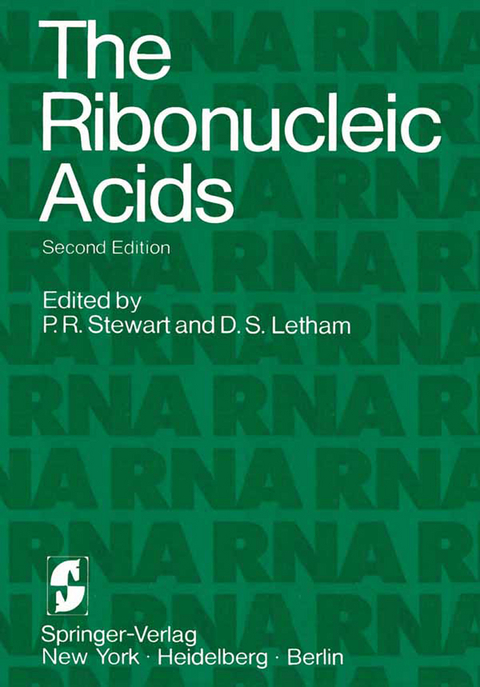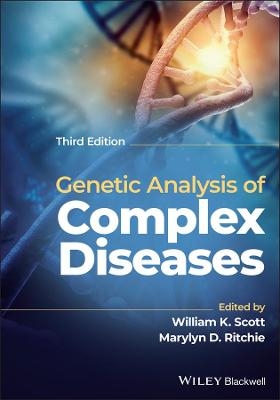
The Ribonucleic Acids
Springer-Verlag New York Inc.
978-1-4612-6362-3 (ISBN)
The central role of the ribonucleic acids (RNA) in mediating the expression of information encoded in DNA in living cells is now well established. Research in this area of biology continues at a remarkable rate, and new and significant information appears almost daily in a wide range of journals, published symposia and specialist reviews. The diverse nature of this information makes it difficult for the newcomer to the field of RNA biochemistry to obtain a general view of established concepts, current activity, and new advances. Moreover, the reviews available are frequently concerned with insular aspects of these Ubiquitous molecules, or in the case of text books, the subject is treated as part of a general outline of proper ties of nucleic acids and thus may be superficial. The authors of the chapters in this collection attempt to provide a comprehensive, though not overly detailed, outline of the biologi cal roles of RNA. They have written for students with basic training in biochemistry, but otherwise with a wide variety of biological interests-plant physiology, virology, organelle bio chemistry, genetics, cell biology, differentiation and development. Viral RNA, which was dealt with as a separate chapter in the first edition, has been deleted from this edition because it is an unman ageably large single topic, and at the same time is addressed in a number of ways in many different places in the book.
1 RNA in Retrospect.- References.- 2 Transcription.- A. Purification and Physical Properties of RNA Polymerases.- B. The Mechanism of Transcription.- C. Inhibitors of RNA Polymerase.- D. Control of Prokaryote Transcription.- E. Control of Eukaryote Transcription.- References.- 3 Nuclear RNA.- A. Preparation of Nuclear RNA.- B. The Concept of Nucleus-specific RNA and Migrating RNA.- C. Heterogeneous Nuclear RNA (HnRNA).- D. Low-molecular-weight Nuclear RNA (LnRNA).- E. Chromosomal RNA (ChRNA).- References.- 4 Messenger RNA.- A. Isolation and Size of Specific Cellular mRNAs.- B. Translation in Cell-free Systems.- C. Nucleotide Sequence Analysis.- D. Architecture of mRNA Molecules.- E. Messenger RNA-Protein Complexes.- F. Turnover of mRNA.- G. Summary.- References.- 5 Transfer RNA and Cytokinins.- A. Purification of Amino Acid-specific tRNAs.- B. The Structure of tRNA.- C. Biosynthesis of tRNA.- D. The Aminoacylation of tRNA.- E. Ribosomal Binding Sites in tRNA Molecules.- F. Possible Roles of tRNAs in the Regulation of Gene Expression.- References.- 6 Ribosomal RNA.- A. The Structure of Ribosomal RNA.- B. The Role of Ribosomal RNA.- C. The Synthesis of Ribosomal RNA.- D. Concluding Remarks.- References.- 7 Translation of Messenger RNA.- A. Initiation of Translation in Prokaryotes.- B. Initiation of Translation in Eukaryotes.- C. Elongation in Prokaryotes.- D. Elongation in Eukaryotes.- E. Termination.- F. The Ribosome Cycle.- G. Translation of Polycistronic mRNA.- H. Regulation of Translation.- I. Concluding Remarks.- References.- 8 Mitochondrial RNA.- A. Experimental Problems Associated with the Isolation and Characterization of RNA from Mitochondria.- B. Mitochondrial Ribosomes.- C. Ribosomal RNA of Mitochondria from Yeast, Fungi, Protozoa, and Plants.- D. Ribosomal RNAof Animal Mitochondria.- E. Unusual Properties of Mitochondrial rRNA.- F. Transfer RNA.- G. Messenger RNA.- H. Genes Coding for Mitochondrial RNA.- I. Transcription and Turnover of RNA in Mitochondria.- J. Mitochondrial RNA in Cellular Function and Development.- K. Concluding Remarks.- References.- 9 Chloroplast RNA.- A. Isolation of Chloroplasts.- B. Extraction of Leaf and Chloroplast RNAs.- C. Transfer RNA.- D. Ribosomes.- E. Ribosomal RNA.- F. Messenger RNA.- G. RNA Synthesis in Isolated Chloroplasts.- H. RNA Synthesis in Developing Chloroplasts.- I. Concluding Remarks.- References.- 10 Isolation, Purification, and Fractionation of RNA.- A. Tissue Disruption.- B. Nucleoprotein Dissociation and Deproteinization.- C. Purification.- D. Fractionation.- References.
| Zusatzinfo | 374 p. |
|---|---|
| Verlagsort | New York, NY |
| Sprache | englisch |
| Maße | 170 x 244 mm |
| Themenwelt | Sachbuch/Ratgeber ► Natur / Technik ► Garten |
| Studium ► 2. Studienabschnitt (Klinik) ► Humangenetik | |
| Naturwissenschaften ► Biologie ► Genetik / Molekularbiologie | |
| Naturwissenschaften ► Biologie ► Mikrobiologie / Immunologie | |
| Naturwissenschaften ► Biologie ► Zellbiologie | |
| Schlagworte | Ribonukleinsäure |
| ISBN-10 | 1-4612-6362-X / 146126362X |
| ISBN-13 | 978-1-4612-6362-3 / 9781461263623 |
| Zustand | Neuware |
| Informationen gemäß Produktsicherheitsverordnung (GPSR) | |
| Haben Sie eine Frage zum Produkt? |
aus dem Bereich


